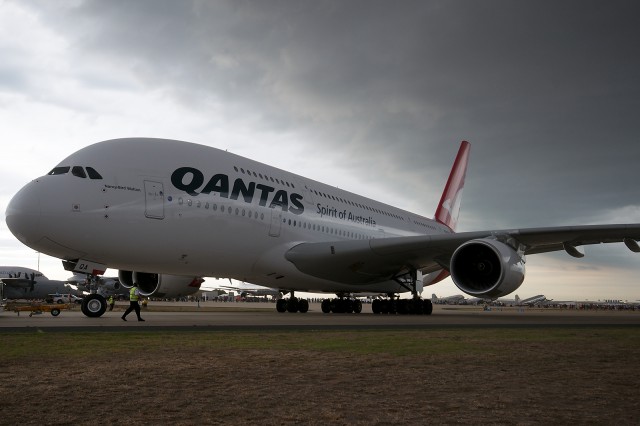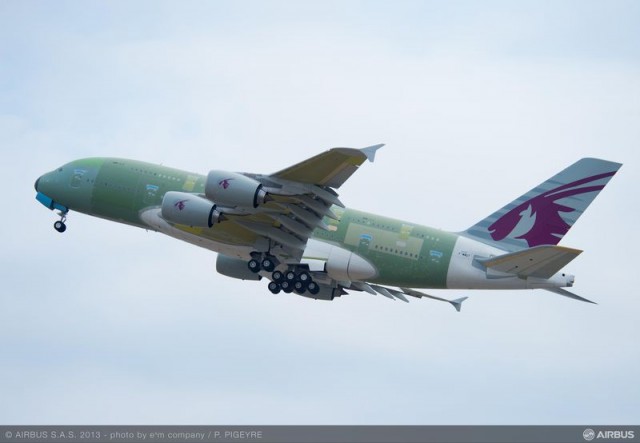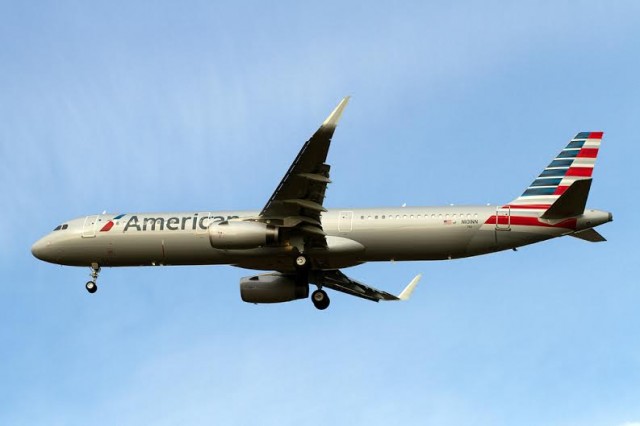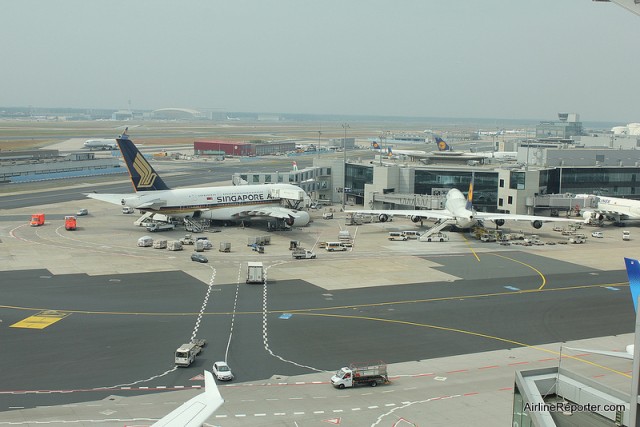
VH-OQA, a Qantas A380-841 on the ramp at Avalon Airport, Victoria five years ago – Photo: Bernie Leighton | AirlineReporter
On the 3rd of December, 2013, Emirates took the crown with having the longest Airbus A380 route in the world — from Dubai to Los Angeles. The route is only 418 miles longer than the longest Qantas A380 route from the Melbourne to Los Angeles.
Qantas is fighting back with their recent announcement that they are going to take back the longest A380 flight crown, maintain the status of the longest commercial flight, and one-up Emirates.

Qatar Airways’ first A380 took off on its maiden flight to Hamburg, where the aircraft is being readied for delivery to QR.
Qatar Airways has now set the date for their inaugural service for the newest aircraft in the fleet, the Airbus A380. Qatar has previously been very tight-lipped about their newest aircraft, giving just small glimpses of the on-board environment or a tease of their intended destinations (London & Paris). When they released information on the first class seats at the ITB event in Berlin in March, this was our first glimpse into the gulf carrier’s plans for the whale jet.

What better photo than a winglet & Pacific Northwest icon Mt. Rainier?
During the recent Aviation Geek Fest, a reader of AirlineReporter suggested that I do a bit of a roundup of all the different ’œwinglets’ that are out in the aviation world (I wish I remembered you name). With so many different kinds of wingtip devices out in the marketplace, there needs to be a handy guide as to what they all are and what aircraft they belong to. But first maybe a little bit of background on what a winglet actually does.
In the late 1970’s, NASA engineer Richard T. Whitcomb took some research from the 1950’s and further developed what we know as the winglet. NASA wanted to see what would happen if they were to create a wingtip device that, with the correct angle and shape, could help reduce drag and increase lift, and also help break up the wingtip vortices.
Getting these benefits from the wing helps make flying easier and increases fuel efficiency – something that back in the 70’s wasn’t as crucial as it is now. How much fuel can you save by adding a winglet? On average, a 737 can save around 4% when compared to a non-winglet version. A winglet is really designed to save money when flying long distances at high altitudes, so long flights are where the most savings are realized.

American’s new Airbus A321 in flight – Photo: Eric Dunetz
A while back, I viewed a tweet about an Air Traffic Control (ATC) conversation in New York, where JFK ATC got a little bit confused about an aircraft type. American Airlines (AA) Flight 32 was incorrectly called a ’œheavy’ aircraft, likely because for so long that flight was operated by a Boeing 767-200. Ever since AA debuted their new Airbus A321 on the LAX-JFK route, this flight no longer needs to use the “heavy” designation, but that didn’t stop the ATC staff from using old habits. It made me question, at what point does an aircraft become ’œheavy’?
When aircraft are approaching or departing an airport, they must use special designations to help avoid the wake turbulence from other aircraft. Larger aircraft, like a 767 or an A340, need more space behind them to prevent the wake vortices generated by the larger wing span from impacting other aircraft. The bigger the aircraft, the longer the distance.
The dangers are real, as all over the world a number of incidents have occurred that can be attributed to a wake vortex. From the crash of an XB-70 in the 60’s to some involving more modern aircraft in the last 10 years (including an A380 in Sydney).

A Singapore Airlines Airbus A380 and Lufthansa Boeing 747-400 – Photo: David Parker Brown
2013 is now well in our rear view mirrors as we speed along the runway of another year and it is time to look back. We have covered what we did during 2013 on AirlineReporter but what about looking at what our two favorite aircraft manufacturers did? 2013 were big years for both Boeing & Airbus on many levels, so let’s take a look at more detail of exactly what happened in the order & delivery world:
Orders:
In 2013, the big air shows in Paris & Dubai flooded the order books of both manufacturers. Airbus and Boeing both had record-breaking years with 1,619 & 1,531 gross orders, respectively. The winner in this situation is obviously Airbus by a good margin; the types of orders look consistent too:




